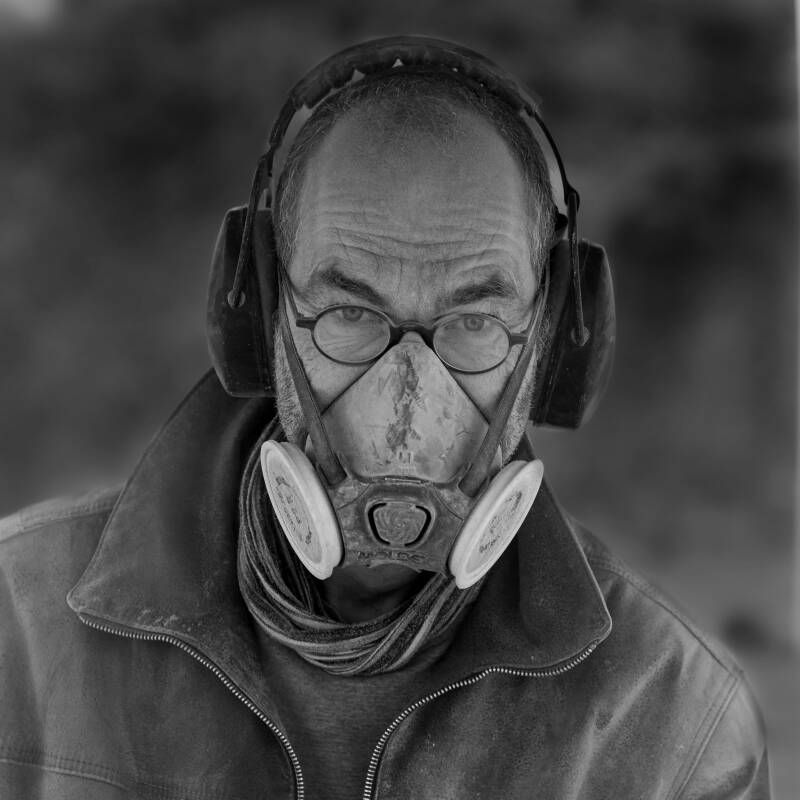INTRODUCTION
Luc De Man (Hamme, °1966) is a Ghent, Belgium-based visual artist, who graduated from the Royal Academy of Fine Arts in Dendermonde, Belgium, specialized in sculpturing.
CUBES
In 2007 when Luc De Man started experimenting with the idea that the cube could be seen as a symbol of human activity and the sphere as a symbol of nature, he had no intention of creating an extensive series whatsoever. After all, he was only looking for the perfect balance between man and nature; between male and female, between yin and yang. When Cubes #6, a name that would only be awarded years later, was chosen as the basic model for a permanent work in the city of Dendermonde, the artist was convinced that this was the crowning glory and thus the final piece of his study. However, it turned out to be the start of the 'Cubes' series.
The first models were made of wood because this choice of material reinforces the natural element in the sculpture. But that’s not all. Cubes were successively created in Mazy, Carrara marble, Corten steel and stainless steel.
Where the presence of nature was initially confirmed by a sphere and by the wood, new references to nature have been introduced. A recurring element is the Fibonacci series. This mathematical series, also known as the law of natural growth, is widely used and results in the Fibonacci triangle. In the sculptures or installations where this triangle is added, the triangle functions as the final piece of the whole work. It is a reference to nature, but also to growth, evolution and the process of creation. The Fibonacci series is the interface between art and science, that is so characteristic of Luc De Man’s work.

ACTION SCULPTURE

June 2007, while Luc De Man is immersing himself in his creations about human activity and nature, in the south of the country a handful of artists plunge into an adventure that continues to this day: the transformation of the newly built city park of the small town of Nismes into an open-air museum of contemporary art. Twelve years later, eleven cities and municipalities, situated between Sambre and Meuse, have already joined in this adventure, each creating a park for monumental sculptures. Together they form the largest permanent exhibition space featuring monumental sculptures in Europe.
This project arose in the wake of the "Eurosculptures" project, a competition for monumental sculptures, organised on the site of the former geographical centre of Europe.
In 2017, during a visit to the exhibition “Vrij Land” in Opdorp, the centre of Flanders, the organisers discovered Luc De Man’s work and invited him to join the artists of “Action Sculpture”. This marks the start of a new adventure of fascinating encounters and in situ creations based on the regional limestone. After Couvin and Philippeville, the city of Walcourt has been exhibiting Luc De Man 's sculptures in public space for a year.
Luc de Man and his fellow artists contribute to the enrichment of our contemporary patrimony and show every day that the “Action Sculpture” project has reached its original challenge to integrate contemporary art in rural areas, even if the work of art is inspired by an imaginary metropolis and the established museums, galleries, schools and exhibition spaces are traditionally concentrated in large cities.
Pierre Gilles, Director Action Sculpture
